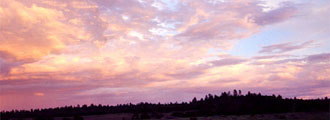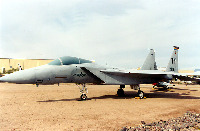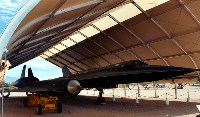|
The
Pima Air and Space Museum is one of the largest collections
of aircraft in the U.S. Some of the aircraft are quite rare
and can only be seen here. The collection includes helicopters,
aircraft, missiles, and a small space collection. A visitor's
centers, trails, programs, and picnic area are also available.
The
collection includes more than 270 aircraft. Famous aircraft
include the SR-71 Blackbird. (capable of Mach 3+), President
John F. Kennedy's, and President Lyndon B. Johnson's Air Force
One. The collection also has several early model Migs, an
A-10 (tank buster), F-15 Strike Eagle, B-52s, B-29s (A B-29
dropped the first atomic bomb), F-111 Aardvarks, F-4 Phantoms,
and many other aircraft. There are aircraft from WWI, WWII,
Korea, and Vietnam. The collection also includes various transport
aircraft, and some helicopters.
A
simulator is also present, which is pretty fun. Passengers get a feel
for what it is like to take off, fly, and land. It is not
recommended for those with heart, motion sickness, or other
problems.
Be
prepared for some walking. There are several hangars and buildings
on site with various exhibits. The museum receives
new aircraft from time to time, which come in various states of repair.
The museum works to preserve these historic pieces. Volunteers
(including veterans who flew some of the planes) and staff
are on hand to answer questions and assist where possible.
There
is an admission fee. Please see http://www.pimaair.org for more more information. Tickets are also sold for the Titan
Missile Museum (only remaining Titan II still in its silo)
and the Aerospace Maintenance and Regeneration Center at Davis-Monthan
Air Force Base. Photo identification is necessary. Please
contact the museum for more information regarding tour times,
ticket prices, and special requirements. (Photo id, etc.)
Location: Tucson.
6000 E. Valencia Road. Two miles east of I-10. Exit 267 head
north. Museum is on the right hand side of the road.
Climate: Keep in mind this is the Sonoran Desert. Summer temperatures frequently
exceed 100 degrees fahrenheit. Visitors may wish to bring water.Fall, Winter, and Spring temperatures are very pleasant. |




